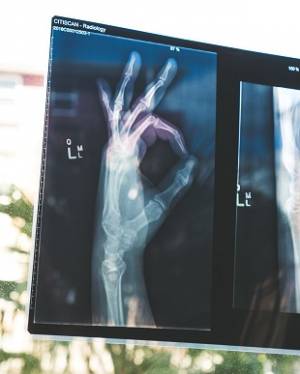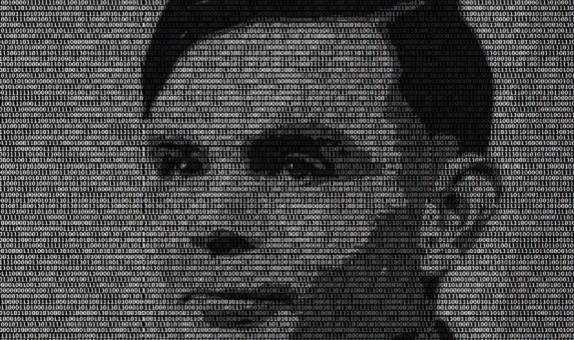Communications research theme
The Communications theme includes wireless and multimedia communications, 5G networks, smart devices and infrastructures, immersive environments, mobile infrastructure, media broadcasting and media streaming.
To support these activities, Kingston University invested in a Centre for Augmented and Virtual Reality Environments that includes a user experience laboratory equipped to industrial standards, a light-field (or plenoptic) camera, light-field display, and high-resolution dynamic vision sensor (or neuromorphic) cameras.
Recent research projects
Recent research projects include:
 Compression and transmission of data generated by neuromorphic sensors (Martini) Neuromorphic sensors mimic how mammals' eyes process information, quickly and efficiently detecting light changes in their field of vision. These state-of-the-art cameras require innovative ways to process and transmit efficiently information they captured. By applying temporal data aggregation, arranging the data in a specific format, and taking advantage of lossless video encoding techniques, high compression ratios can be achieved. This work was published in IEEE Internet of Things Journal (2020).
Compression and transmission of data generated by neuromorphic sensors (Martini) Neuromorphic sensors mimic how mammals' eyes process information, quickly and efficiently detecting light changes in their field of vision. These state-of-the-art cameras require innovative ways to process and transmit efficiently information they captured. By applying temporal data aggregation, arranging the data in a specific format, and taking advantage of lossless video encoding techniques, high compression ratios can be achieved. This work was published in IEEE Internet of Things Journal (2020).
 Mobile healthcare (M-health) for chronic disease management and decision support systems (Philip) Mobile health (M-health) applications are becoming increasingly popular as an ideal tool to monitor the long-term health conditions of a patient. They play a key role in the emerging monitoring and sensor technologies such as fitness trackers to surgical rehabs that improve the patient's safety and quality of healthcare. In particular, collected data can be analysed automatically in real-time to support clinicians' decision making. A new methodology addressing kidney disease detection was published in IEEE Sensors Journal (2020)
Mobile healthcare (M-health) for chronic disease management and decision support systems (Philip) Mobile health (M-health) applications are becoming increasingly popular as an ideal tool to monitor the long-term health conditions of a patient. They play a key role in the emerging monitoring and sensor technologies such as fitness trackers to surgical rehabs that improve the patient's safety and quality of healthcare. In particular, collected data can be analysed automatically in real-time to support clinicians' decision making. A new methodology addressing kidney disease detection was published in IEEE Sensors Journal (2020)
 Design, implementation, and evaluation of the next generation communication network concept for Public Protection and Disaster Relief agencies (G.C., Politis and Pfluegel). Supported by network operators and industry, it provides security, privacy, seamless mobility, quality of service, and reliability support for mission-critical Private Mobile Radio voice and broadband data services. This work was published in IEEE Wireless Communications (2019).
Design, implementation, and evaluation of the next generation communication network concept for Public Protection and Disaster Relief agencies (G.C., Politis and Pfluegel). Supported by network operators and industry, it provides security, privacy, seamless mobility, quality of service, and reliability support for mission-critical Private Mobile Radio voice and broadband data services. This work was published in IEEE Wireless Communications (2019).
 Multimedia Quality of Experience (Martini, N. Barman). Recent years have seen an increasing growth and popularity of multimedia applications and services. It is important to establish how the end-to-end chain, from content capture to display, affects the user perception and whether the overall experience of users is satisfactory or not.
Multimedia Quality of Experience (Martini, N. Barman). Recent years have seen an increasing growth and popularity of multimedia applications and services. It is important to establish how the end-to-end chain, from content capture to display, affects the user perception and whether the overall experience of users is satisfactory or not.
To assess the quality from the user point of view, typically a small set of subjects are asked to visualise content and provide their opinion; the mean score across the subject is then considered as quality index. We have shown that calculating the mean of the small sample is not the best way to estimate the quality and we have proposed a model to estimate the "population mean opinion score" from an analysis of the scores of the small sample of subjects. The results of this study have been presented in IEEE Transactions on Multimedia (2020).
Light field displays enable immersive experience, showing scenes in 3D in a holographic representation. Although their appearance on the consumer market is approaching, many potential applications of light field technology have not yet been addressed, such as video streaming. Based on considerations on the quality of experience for the visualisation of light fields, we proposed a strategy based on dynamic adaptive streaming for the transmission of light field video. In order to evaluate the presented concept of quality switching, we carried out a series of subjective tests, where test participants were shown light field videos containing stalling events and switches in spatial and angular resolution. This work was presented in IEEE Transactions on Broadcasting (2018).
While interactive gaming video streaming applications have received much attention, passive gaming video streaming, in-spite of its huge success and growth in recent years, has seen much less interest from the research community. For the continued and future growth of such services, the end user gaming quality of experience must be controlled and maximized to ensure user acceptance. Studies investigating this issue were published in IEEE Access (2019) and in IEEE Transactions on Circuits and Systems for Video Technology (2021).
Medical images and videos play a major role in modern e-health services and have become an integral part of medical data communication systems. However, a major challenge is that data must be diagnostically reliable and the value of the data (possibly impaired by imperfect acquisition, compression or transmission impairments) for this purpose must be assessed.
We recently investigated the diagnostic quality of fundus eye images for the diagnosis of diabetic retinopathy and presented this work in IEEE Access (2020). Our work in the area of medical video includes an investigation of the performance of the emerging video compression standards on ultrasound medical video, published in the IEEE Journal of Biomedical and Health Informatics (2014).









